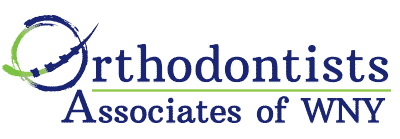Orthodontic issues don’t always appear in the teenage years. In fact, many begin to develop much earlier, during the foundational stages of a child’s growth. As a result, the idea of waiting until all permanent teeth are in place is no longer the standard. Today, early orthodontic intervention is recognized as a proactive way to support proper jaw development, tooth alignment, and long-term oral health.
By evaluating and addressing certain conditions in childhood, we can guide the way a child’s bite and facial structure develop. This early insight allows for more effective planning, often reducing the need for more complex or invasive treatments later on. In some cases, early intervention can minimize the time a child spends in braces during adolescence or even eliminate the need altogether.
Early Orthodontic Intervention for Jaw Issues
Certain orthodontic issues respond best when addressed early. One example is the relationship between the upper and lower jaws. Think of the upper jaw as a door frame and the lower jaw as the door that closes into it. If the upper jaw is too narrow, it can interfere with how the lower jaw fits. This imbalance can potentially lead to a condition known as a crossbite.
A unilateral crossbite is a condition where one side of the jaw does not align properly. We often look for this issue before age seven. At this stage, a simple appliance can be used to gently widen the upper jaw. This helps the lower jaw shift into a more natural position and supports balanced growth as the child develops.
Early orthodontic treatment in cases like this can correct jaw problems before they progress. This can reduce the need for more complicated care in the future.
Early Orthodontic Intervention for Tongue Issues
Some children may benefit from an early orthodontic evaluation due to tongue-related concerns. This can include tongue dysfunction or habits like finger sucking that affect how the tongue functions. These issues may interfere with proper jaw development and tooth alignment. In many cases, a simple conversation with the child can be enough to help them break the habit. Identifying and addressing these problems early can support healthier oral growth and reduce the need for more complex treatment later.
If a tongue pattern problem is identified and cannot be corrected through orthodontic care alone, we can refer families to the appropriate specialist for further evaluation and treatment. These issues can easily go unnoticed, especially if they are not causing academic or speech delays. School speech pathologists may not always identify a tongue thrust unless it directly affects learning.
In our practice, we believe that any time a parent suspects something may be wrong is the right time to schedule an evaluation. Early orthodontic treatment can help address a wide range of concerns, including tongue dysfunction, thumb sucking, overbites, underbites, crossbites, and the early loss of baby teeth. Identifying and treating these conditions early can create a healthier environment for future growth and development.
Understanding the Phases of Orthodontic Treatment
Orthodontic treatment typically consists of two phases. Phase I, or interceptive treatment, usually begins between the ages of 6 and 10, while some baby teeth are still present. This phase focuses on correcting issues such as jaw discrepancies, crossbites, severe crowding, and harmful oral habits. It helps guide jaw growth, create space for incoming permanent teeth, and reduce the risk of more serious problems later on. Treatment at this stage may include palatal expanders, space maintainers, or other functional devices.
Phase II begins once most or all of the permanent teeth have erupted, typically between ages 11 and 15. This phase focuses on aligning the permanent teeth, correcting bite problems, and improving overall function and appearance. Common treatments during Phase II include full braces or clear aligners, depending on the patient’s needs and goals.
Schedule A Free Consultation With Our Dedicated Buffalo Orthodontists
If you’re interested in helping your child maintain a healthy and beautiful smile for years to come, schedule a free consultation with our experienced orthodontists serving Western New York. At Orthodontists Associates of Western New York, our reputation as a leader in orthodontic care is based on one thing: Making a Healthy and Beautiful Smile. Orthodontists Associates of Western New York is proud to offer early orthodontic treatment throughout Buffalo, Lancaster, Olean, Hamburg, Orchard Park, and Dunkirk, New York.
We proudly provide braces and orthodontic solutions for patients of all ages. If you have any further questions or concerns, please contact one of our five locations to schedule a free screening for you or your child.
Download Our Free Early Orthodontic Treatment Guide


